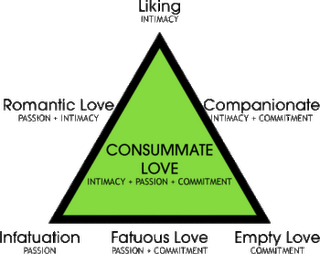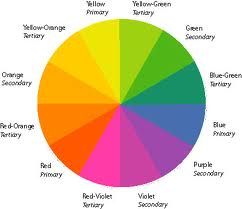Relationships
Love, Decoded
Fascinating studies uncover the secrets of who we're attracted to and why.
Posted August 9, 2012
Why are we drawn to certain people and not others? What makes us fall in love, and stay in love? Poets delve into the mystery of love with beautiful sonnets, musicians seek to capture its subtle essence in song, and many others feel that their love is divinely inspired. Social and personality psychologists, on the other hand, break love down into simple shapes, colors, and equations, the most popular of which are described below.
These theories may seem to reduce love to something more mundane and unexciting, but they also have a certain elegance of their own:
1. The Love Triangle

1. The Love Triangle
Sternberg also describes several other combinations:
- Romantic Love involves intimacy and passion without commitment and is more common in the teenage and young adult years.
- Companionate Love involves intimacy and commitment without passion and is typical of close friends, and sometimes long-term marriages.
- Infatuated Love involves passion only and often occurs at the very beginning of a relationship.
- Empty Love involves commitment with no intimacy or passion, as in an arranged marriage—but it may grow into other forms of love over time.
- Fatuous Love is like getting engaged after dating for three weeks—it involves passion and commitment, but no deeper intimacy.
2. The Color Wheel.

2. The Color Wheel.
- Eros, is characterized by idealization of one's partner and strong romantic feelings:
- Ludus is characterized by a need for excitement and a view of love as a game—research suggests that men are more likely than women to be ludic.
- Storge is characterized by stability and friendship, similar to Sternberg's companionate love.
- Pragma is characterized by practical considerations, such as looking for a "checklist" of traits. (Storge and pragma are more common among women.)
- Mania involves obsession, jealousy, and extreme ups and downs.
- Agape refers to selflessness and unconditional compassion.
(To find out your love style, try this test.)
3. The Mere Exposure Effect. This is one of the most memorable concepts from my first psychology class an— probably the most unromantic theory of all. The mere exposure effect, discovered by Robert Zajonc (1968), refers to our tendency to like things that are familiar to us—that is, those things and people that we are exposed to most often. The mere exposure effect helps to explain propinquity, the idea that one of the main determinants of interpersonal attraction is physical proximity. In one famous series of studies conducted by Leon Festinger and others (1950), the development of friendships in an apartment complex was directly related to the distance between apartments—people were more likely to become friends with neighbors who lived even just slightly closer, and those who they happened to pass more often on the way down the stairs or to the mailbox. While there may be some degree of randomness and luck in the attachments we form, this doesn't mean that relationships based on proximity are any less genuine and meaningful. But it does suggest that we might have a whole different life if we'd just happened to live on a different hall in college.
4. The Clone Attraction. Do opposites attract, or do birds of a feather flock together? Research suggests that the latter is more often true. People are more attracted to those who are similar to themselves in pretty much every way, from personality to religious beliefs to physical appearance, and more similar couples tend to be happier. In one study, participants reported being most attracted to morphed versions of their own faces (though the interpretation of this finding is controversial). While there are advantages to genetic diversity, there may be social and practical disadvantages: The more similar a couple looks, the easier it could be for the father to recognize if a child is not his own, which could support an evolutionary argument for attraction to physically similar others. To see the effects of similarity in action, see this slideshow of clone-like celebrity couples. Or open any newspaper to the Weddings page.
5. The Commitment Equation. How committed are you to your partner? Research suggests that it depends on three key factors:
- How invested you are in the relationship (i.e., what you've sacrificed/costs of leaving the relationship).
- How much you get out of the relationship.
- Whether there are attractive alternatives.
Caryl Rusbult developed the Investment Model by studying college students' relationship trajectories—in statistical analyses, these three variables emerged as the strongest unique predictors of commitment. Here is the equation:
Commitment = Investment + (Rewards - Costs) - Attractive Alternatives
The investment model helps to explain why people might stay in an abusive or unhappy relationship—there may be children involved, financial dependence, or a lack of external social support. It may also explain why people who have too many attractive alternatives available sometimes have trouble settling down.
Although it is unlikely that any single account will ever fully capture what for most of us is a very personal and complex experience, the scientific study of love need not diminish its magic. If anything, it might help us love more wisely, with greater appreciation for the social, biological, and cultural forces that shape the choices we make.

Eugenio Marongiu/Shutterstock
This post previously appeared in Psych Your Mind.
For further reading: Biological anthropologist Helen Fisher is one of the most prolific and influential love scholars–see her books to learn about topics such as the chemistry of attraction (e.g., why love is like a drug) and the evolutionary functions of romantic love.




